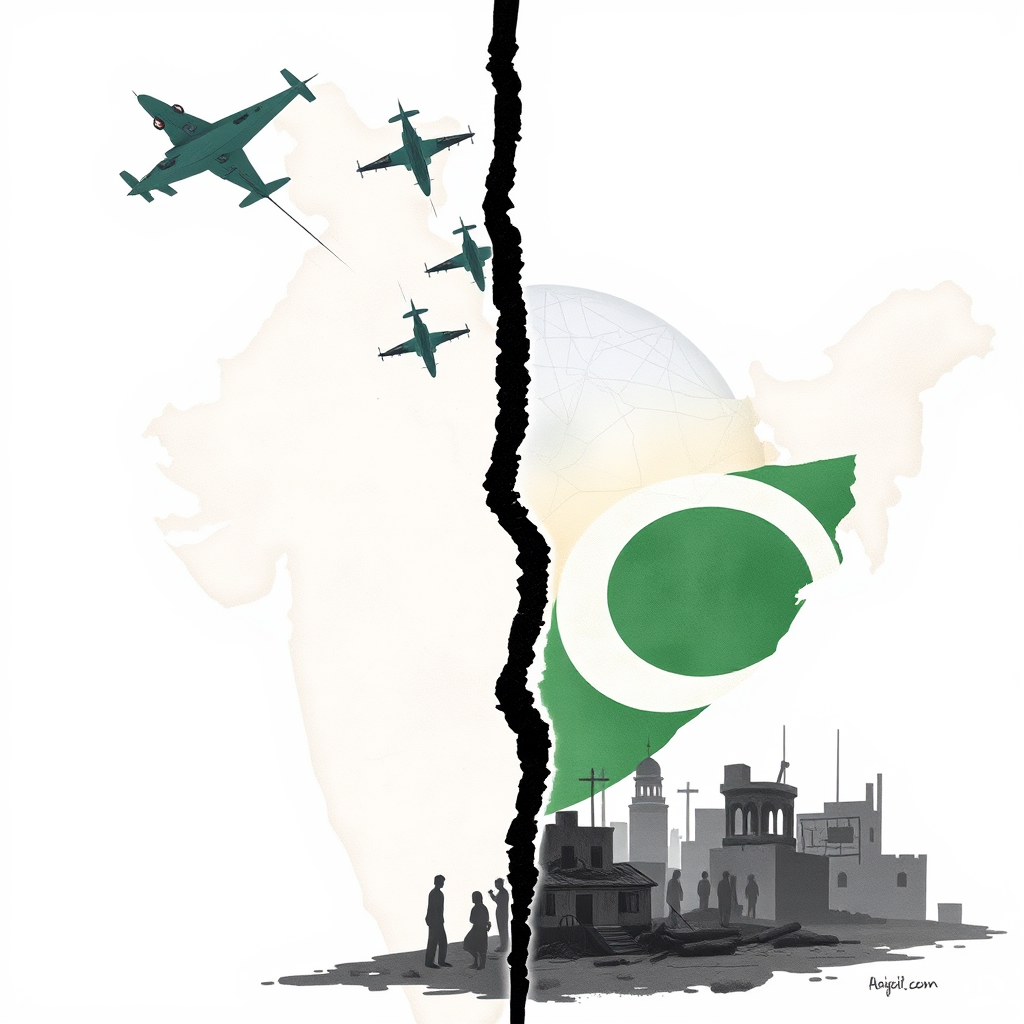India and Pakistan: A Dangerous Brinkmanship Crisis

Tensions between India and Pakistan reached a dangerous new height early Wednesday with Indian airstrikes targeting Pakistan’s Punjab province and Pakistan-administered Kashmir. New Delhi asserts the strikes were a direct response to the April 22 attack in India-administered Kashmir, which killed 26 tourists and was blamed on Pakistan. While India framed the operation as limited in scope, Pakistan vehemently condemned it as an “act of war,” claiming civilian casualties and infrastructure damage, including a mosque, resulting in at least 31 deaths.
Pakistan swiftly retaliated with shelling across the Line of Control, reportedly killing at least 15 civilians on the Indian side. Conflicting reports emerged regarding aerial engagements, with Pakistan claiming to have downed multiple Indian jets, a claim partially acknowledged by Indian officials who confirmed the crash of three aircraft but cited unclear causes.
The situation is exceptionally precarious. The scale of hostilities, coupled with heightened animosity in both capitals, dramatically increases the risk of further escalation. India’s targeting of Punjab, a densely populated and economically vital province, raises the possibility of Pakistan striking targets beyond Kashmir, potentially triggering a wider conflict. This could lead to further Indian strikes, even against military installations, and, alarmingly, raises the specter of nuclear escalation – a terrifying possibility given the history and volatility of the relationship.
International efforts to de-escalate are already underway, with key capitals like Washington, London, Riyadh, Doha, and Abu Dhabi actively engaging with both sides. However, these diplomatic overtures will only succeed if India and Pakistan can be convinced that de-escalation serves their best interests.
Past crises in 2016 and 2019 saw relatively swift de-escalation, but the current situation is far more intense. Both nations need a face-saving way to step back from the brink. India may view its initial strikes as sufficient to achieve its stated goal of degrading militant infrastructure, particularly targeting Jaish-e-Mohammed (JeM) and Lashkar-e-Taiba (LeT) groups. Reports even suggest a statement from JeM leader Masood Azhar acknowledging casualties within his organization.
Pakistan’s criteria for de-escalation are more complex. Ideally, it seeks restored deterrence against future Indian actions. Proof that its military downed Indian jets could provide a viable off-ramp. However, given its strong condemnation of the strikes as an act of war, Pakistan may demand more substantial concessions. Any escalation from Pakistan will likely invite a stronger response from India, further complicating the situation.
Currently, India and Pakistan are closer to full-scale war than they have been in years. The danger isn’t simply escalation; it’s the potential for a prolonged crisis where neither side is incentivized to de-escalate quickly. This is a deeply concerning development, and the international community must redouble its efforts to facilitate dialogue and prevent a catastrophic outcome. The current trajectory is unsustainable and demands immediate, decisive action to pull both nations back from the precipice.